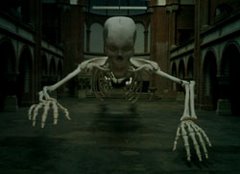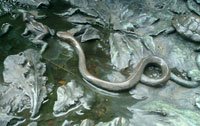 “A man is in a serious condition in a Brisbane hospital after a dangerous pesticide leak in a shipping container at Fisherman Islands at the Port of Brisbane.” The toxin “is believed to contain the chemical endosulfan”.
“A man is in a serious condition in a Brisbane hospital after a dangerous pesticide leak in a shipping container at Fisherman Islands at the Port of Brisbane.” The toxin “is believed to contain the chemical endosulfan”.This highly toxic POP is banned in the EU and other countries, it is very persistent in the environment.” Endosulfan is a very toxic chemical for nearly all kind of organisms. Endosulfan has the potential to cause some endocrine disruption in both terrestrial and aquatic species. Endosulfan causes neurotoxicity and haematological effects and nephrotoxicity.”
The organochlorine pesticides came from “a leaking shipping container” on Fisherman Islands (map, pdf) which is surrounded by the Moreton Bay Marine Park.
The Bay Journal reports on the 'rapid crowding' of Moreton Bay in the Port of Brisbane.
Already there are a lot of threats to the Moreton Bay Marine Park .There are more horror tales of a 'A Primeval Tide of Toxins' in Moreton Bay.
Hope, the man makes it and the abundant marine wildlife and birds are not harmed.
Links:
- "The European Commission has proposed to amend the annexes to the Stockholm Convention on Persistent Organic Pollutants by adding endosulfan, a neurotoxic organochlorine insecticide."
- Moreton Bay Marine Park

















